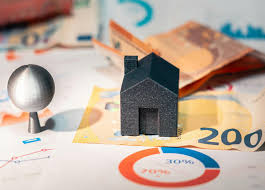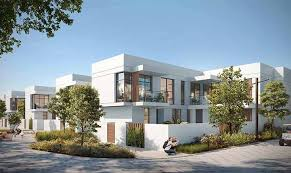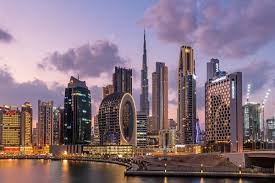Now Reading: Affordable Housing in UAE: Government Policies and Market Trends in 2025
-
01
Affordable Housing in UAE: Government Policies and Market Trends in 2025
Affordable Housing in UAE: Government Policies and Market Trends in 2025

Table of Contents
Affordable Housing in the UAE: Government Policies and Market Trends in 2025
The United Arab Emirates (UAE) is experiencing a significant transformation in its real estate sector, with a notable shift towards affordable housing. This change is driven by a combination of government policies, market dynamics, and evolving demographic trends. In 2025, the UAE’s affordable housing landscape is characterized by strategic government initiatives, a growing demand for mid-tier housing, and emerging market trends that reflect the country’s commitment to providing sustainable and accessible housing options for its residents.
Government Policies Supporting Affordable Housing

The UAE government has recognized the importance of affordable housing in ensuring social stability and economic growth. Several key policies and initiatives have been introduced to promote the development and accessibility of affordable housing:
- Dubai 2040 Urban Master Plan: This comprehensive plan allocates more land for budget-friendly housing, aiming to ensure sustainable housing for all income levels. It emphasizes the development of mixed-use communities that integrate residential, commercial, and recreational spaces.
- National Housing Policy: With an investment of AED 65 billion over 20 years, this policy focuses on providing affordable housing solutions for UAE nationals. It includes initiatives such as land grants, subsidized loans, and support for private sector involvement in housing projects.
- Public-Private Partnerships (PPP): The government encourages collaborations between public entities and private developers to deliver cost-effective housing solutions. These partnerships aim to leverage private sector efficiency and innovation while ensuring affordability and quality.
- Sustainable Building Regulations: New regulations promote sustainable building practices by offering tax breaks and reduced fees for developers who prioritize green construction. The Al Sa’fat – Dubai Green Building System sets mandatory sustainability standards, and the National Green Certificates Program supports energy efficiency and water conservation.
Market Trends in Affordable Housing

The UAE’s real estate market in 2025 is witnessing several trends that reflect the growing emphasis on affordable housing:
- Increased Supply of Affordable Units: Developers are responding to the rising demand for affordable housing by increasing the supply of mid-tier and budget-friendly units. Areas like Dubai South, Jumeirah Village Circle (JVC), and Dubai Hills Estate are becoming hotspots for affordable homes, offering a balance between premium amenities and accessible pricing.
- Flexible Payment Plans: To make homeownership more accessible, at least 40% of new developments in Dubai are offering flexible payment plans. These plans include extended repayment periods and lower monthly installments, making it easier for middle-income earners and first-time buyers to invest in property.
- Growth in Affordable Luxury Segment: The affordable luxury homes sector has grown by 34% in the past year, driven by higher rental yields and the emergence of new trends. This segment offers quality living at more accessible price points, attracting a broader range of buyers and investors.
- Expansion Beyond Traditional Markets: While Dubai remains a focal point, other emirates like Sharjah, Ajman, and Ras Al Khaimah are gaining attention for their affordable housing options. These areas benefit from enhanced connectivity, government-backed infrastructure projects, and a growing demand for budget-friendly living spaces.
Challenges and Opportunities

Despite the positive developments, several challenges persist in the affordable housing sector:
- Rising Construction Costs: Escalating costs of materials and labor are impacting the affordability of housing projects. Developers may face difficulties in maintaining affordability while ensuring quality construction.
- Balancing Supply and Demand: While there is an increasing supply of affordable housing units, ensuring that this supply meets the growing demand remains a challenge. Strategic planning and investment are required to align supply with demand effectively.
- Integration of Sustainable Practices: Incorporating sustainable building practices adds to construction costs but is essential for long-term environmental and economic benefits. Developers must find cost-effective ways to integrate green technologies and materials.
However, these challenges also present opportunities for innovation and growth:
- Adoption of Modular Construction: Utilizing modular construction techniques can reduce building costs and construction time, making housing projects more affordable and efficient.
- Smart Home Integration: Incorporating smart technologies into affordable housing units can enhance energy efficiency and reduce operational costs, making homes more attractive to buyers and renters.
- Government Incentives: Continued government support through subsidies, grants, and favorable policies can encourage private sector investment in affordable housing projects.
Conclusion
In 2025, the UAE’s affordable housing sector is poised for significant growth, driven by supportive government policies, market demand, and innovative development practices. While challenges such as rising construction costs and the need for sustainable practices remain, the opportunities for growth and improvement are substantial. By continuing to prioritize affordable housing, the UAE can ensure that all residents have access to quality, sustainable, and affordable living spaces, contributing to the country’s overall social and economic development.
WATCH MORE: https://www.youtube.com/watch?v=w7-awy-QHE4
READ MORE: The Rise of Smart Homes in UAE: How Technology is Shaping the Real Estate Market






















